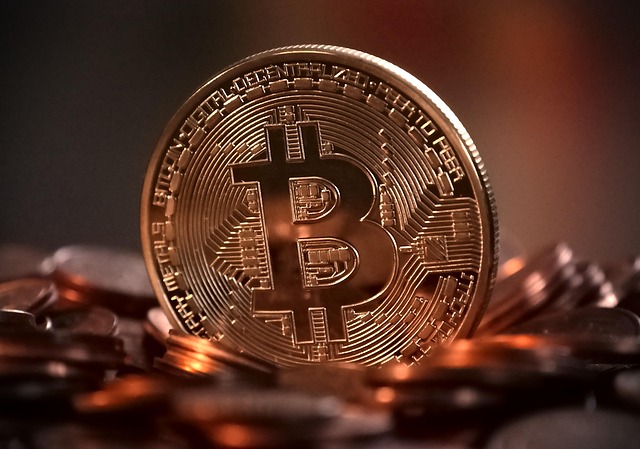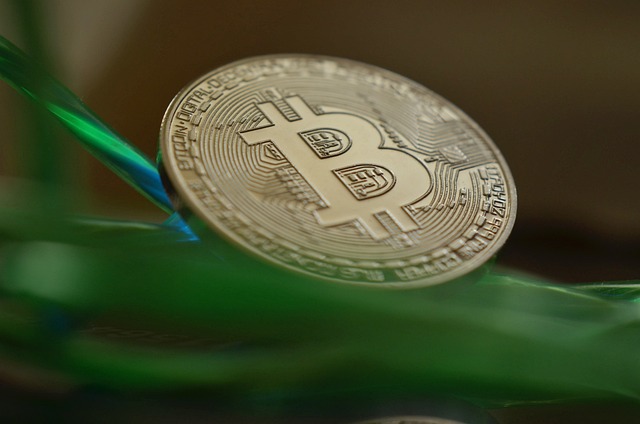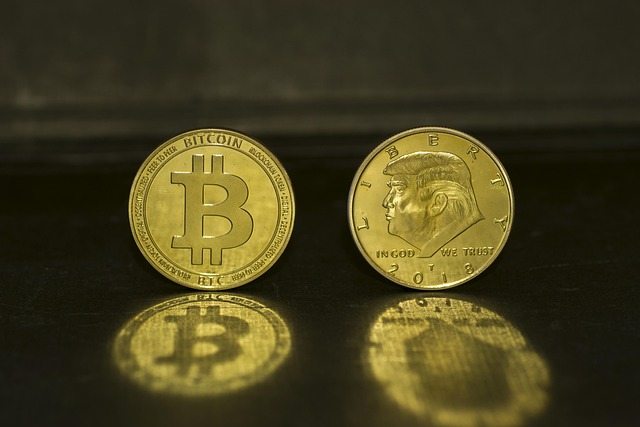SpaceX flight bankrolled by crypto investor launches first manned polar orbit
Elon Musk’s SpaceX has sent a crew of four private astronauts on the first manned space flight to orbit the Earth’s poles, in a mission bankrolled and led by a wealthy crypto investor.Chun Wang, the Chinese-born Maltese entrepreneur who founded the Bitcoin (BTC) mining pool F2Pool, paid for and is leading SpaceX’s “Fram2” mission, which is named after a 19th-century Norwegian Arctic exploration ship.Wang and three others blasted off from Cape Canaveral, Florida, at 1:46 am UTC on April 1, on a three- to five-day orbit that will be the first human space mission to fly over the North and South poles.Liftoff of Fram2 and the @framonauts! pic.twitter.com/XBL5juCnHQ— SpaceX (@SpaceX) April 1, 2025Wang hasn’t disclosed how much he paid SpaceX for the flight, but he brought along German polar scientist Rabea Rogge, Norwegian cinematographer Jannicke Mikkelsen and Australian Arctic adventurer Eric Philips.SpaceX said the crew will also carry out 22 experiments — including taking the first X-ray in space and growing mushrooms — which are designed to inform on human health in space and the effects of long-duration space flight.Chun Wang (right) onboard the SpaceX Dragon capsule with Jannicke Mikkelsen (center-right), Rabea Rogge (center-left) and Eric Philips (left). Source: SpaceXWang was born in China but said in 2023 that he became a citizen of Malta. He founded F2Pool in 2013, which was one of China’s first Bitcoin mining pools and is currently the fourth-largest with a market share of just under 10%, according to mempool.space.He went on to create the Ethereum staking pool provider Stakefish in 2018, which beaconchain data shows is currently the eighth largest pool, boasting around 2,025 validators.Related: Inside ‘eccentric’ Ripple founder’s multibillion-dollar space station plan After blasting off from Florida, it took Wang and his crew less than 30 minutes to reach the South Pole flying around 265 miles (430 kilometers) above the Earth. They’re expected to completely circle the globe about every one and a half hours.The SpaceX Dragon capsule will splash down off the coast of California after the mission ends, which will be the first for the company.Magazine: Crypto fans are obsessed with longevity and biohacking — Here’s why
Why institutions are hesitant about decentralized finance — Shibtoshi
Shibtoshi, the founder of the SilentSwap privacy-preserving trading platform, outlined several concerns that make institutions hesitant to adopt decentralized finance (DeFi) solutions, including privacy, a lack of standardized compliance regulations, and legal accountability.The DeFi founder told Cointelegraph that the high transparency of onchain transactions presents a problem for companies that must conceal sensitive information, including trading strategies, payroll information, and business-to-business agreements. Shibtoshi said:”The main concerns — regulatory uncertainty, privacy limitations, and complex user experience — are real, but solvable. Innovations in privacy-preserving protocols are making DeFi increasingly compatible with enterprise needs. Platforms like SilentSwap are a step in that direction.”Regulatory uncertainty continues to be one of the biggest problems for DeFi and is compounded by a fragmented approach across legal jurisdictions, which prevents institutional adoption, Shibtoshi added.”Are DeFi tokens securities? What happens if a decentralized autonomous organization (DAO) messes up — and who is responsible when it does? It is all still pretty unclear,” the SilentSwap founder told Cointelegraph.Shibtoshi urged common sense regulations that encourage innovation and preserve the value propositions of decentralized finance, including self-custody, speed, and cost-effective transactions.The total value locked across the DeFi ecosystem has not yet returned to peak levels witnessed in 2021 and 2022. Source: DeFiLlamaRelated: Specialized purpose DEXs poised for growth in 2025 — Curve founderUS Congress overturns archaic DeFi rule, but DeFi still in dangerBoth chambers of the United States Congress recently voted to overturn the highly unpopular DeFi broker rule requiring decentralized finance protocols and platforms to report customer transactions to the Internal Revenue Service (IRS).The US Senate repealed the IRS broker rule in a 70 to 27 vote on March 4, followed by members of the US House of Representatives voting to repeal the IRS rule on March 11.Despite the repeal of the archaic rule, overregulation may end up killing a sector that was born as a decentralized, more accessible, and pseudonymous alternative to traditional finance.According to crypto entrepreneur and investor Artem Tolkachev, regulatory compliance is undermining decentralization in DeFi and destroying the value proposition of the nascent sector.The emphasis on regulatory compliance measures increases the potential for censorship and shifts control from the users to third-party intermediaries and large institutions, Tolkachev wrote.Magazine: How Shibtoshi gambled 37 ETH and became a Shiba Inu billionaire
Bitcoin price drop to $72K possible due to ‘macro liquidity’ conditions — Analyst
After a positive start to the week, Bitcoin price reverted to negative returns after BTC (BTC) dropped 3.5% to an intraday low of $84,120 on March 28. The price rejection occurred at the cusp of the descending trendline (black) and the upper range of the ascending channel pattern.Bitcoin 1-day chart. Source: Cointelegraph/TradingViewOn the daily chart, BTC is currently below the 200-day exponential moving average (EMA) again, and a potential close below the key indicator might trigger further downside. Global liquidity expansion could help Bitcoin price Recent analysis from macroeconomic market analyst Capital Flows pointed out that Bitcoin could correct to the $72,000-$75,000 region if liquidity conditions remain unchanged. Macro liquidity refers to the total capital available in the financial system that can easily flow into risk-on assets like equities and crypto but is influenced by factors like interest rates, US Federal Reserve policies and market conditions.According to Capital Flows, Bitcoin is exhibiting a “greater convergence” with traditional risk assets, but it remains at the periphery of the risk curve. This implies that for capital to flow back into BTC, investors’ mindset must shift from focusing on less risky assets, such as bonds, to riskier assets like BTC or low-quality banks in the Russell index. The researcher said, “Broadly speaking right now, the macro liquidity backdrop is neutral. Rates have come down marginally, but the carry trade continues to create risk for assets.”On the contrary, other analysts have pointed out that the rise of the Global M2 money supply could potentially trigger a BTC rally. The Global Liquidity chart, which monitors M2 growth from major central banks, has historically formed a correlation with Bitcoin’s price movements. Bitcoin and Global M2 Money supply correlation. Source: X.comColin Talks Crypto, a crypto commentator, said that the predictive correlation between M2 supply and BTC indicates a BTC rally around May 1, which might last two months.However, the key difference between macro liquidity and global M2 growth is that while M2 measures total money supply, macro liquidity highlights the ease at which capital can flow into risk assets. For context, even if the M2 money supply rises, macro liquidity might remain the same if the money is allocated to low-risk assets. In light of that, Capital Flows said, “The quantity of money in the system isn’t expanding like it used to.”Related: Why is Bitcoin price down today?Bitcoin fills sub-$85K CME gapBitcoin’s recent rally created a CME gap between $84,435 and $85,000. The CME Bitcoin futures gap indicates the difference between the closing price of BTC CME futures on Friday and the opening price on Sunday evening. The gaps get filled most of the time, and traders approach these levels from the point of resistance or support, depending on the market structure. Bitcoin CME gap chart. Source: Cointelegraph/TradingViewAs illustrated in the chart, BTC price filled the CME gap before its daily close on March 28, which can lead to a short-term bounce. The CME gap is also aligned with a retest of the lower range of the ongoing ascending channel pattern, as mentioned earlier. However, crypto trader HTL-NL pointed out the possibility of a long-term correction below, forming new lows in 2025. The trader showed immediate support at $76,700, which might be a minor retest region before prices drop below $74,000. Likewise, Crypto Chase, a technical analyst, noted that it is a “do or die” situation for Bitcoin. In an X post, the trader said, “Either holds this FVG / 2 weeks ago high at 8527,0 or it fails, and I’ll look for a short on retest targeting build up liq near 80K.”Bitcoin 1-day analysis by Crypto Chase. Source: X.comThis article does not contain investment advice or recommendations. Every investment and trading move involves risk, and readers should conduct their own research when making a decision.
US crypto policy: Tax breaks, SEC cases dropped, Bitcoin Reserve plans unfold
In the rapidly evolving world of cryptocurrency, regulatory shifts, legal battles and groundbreaking policy proposals are shaping the industry’s future. The premiere episode of The Clear Crypto Podcast by Cointelegraph and StarkWare brings in a legal expert specializing in the crypto industry to help shed light on the state of crypto regulation in the US, ongoing enforcement actions and the growing role of Bitcoin in government reserves.Crypto regulation in fluxWith the Securities and Exchange Commission (SEC) under a transformed leadership in the Trump administration, the regulatory landscape is undergoing significant changes. High-profile lawsuits against Coinbase, Consensys, Binance and Tron have either been settled or dropped, signaling a new chapter for the industry.Cointelegraph head of multimedia Gareth Jenkinson highlighted the importance of these shifts, noting how enforcement actions have played a pivotal role in shaping the industry’s approach to compliance. He recalled past conversations with Consensys CEO and Ethereum co-founder Joe Lubin saying: “If no one took the legal battle to the SEC, the industry just would have been regulated into the ground and it would have just been a wasteland.” The recent wave of case closures, including investigations into Uniswap, OpenSea and Gemini, marks a stark departure from the SEC’s previous approach.Related: SEC dropping XRP case was ‘priced in’ since Trump’s election: AnalystsLawyers as protectors of innovationKatherine Kirkpatrick Bos, general counsel at StarkWare, also touched on the crucial role legal professionals play in the space in this pivotal moment. “The real value of a crypto lawyer is being dialed in —publishing, analyzing risks, and ensuring companies stay compliant while enabling innovation.”She underscored the integrity within the crypto legal community, saying, “Most crypto lawyers are here for the right reasons — to protect builders and facilitate growth. Of course, bad actors exist, but the broader industry operates with a high level of integrity.”Keeping up in a fast-paced industryWith regulatory shifts, legal battles and policy proposals unfolding at an unprecedented pace, staying informed is more challenging than ever. “Three massive news events happened in just three weeks — the Libra memecoin scandal, the Bitcoin reserve proposal, and the Bybit hack,” Jenkinson noted. “In crypto, you can’t sleep. You need a 24-hour news operation to keep up.”As the US moves toward potential regulatory reforms and institutional adoption of Bitcoin, industry participants must remain vigilant. Whether it’s monitoring tax policy changes, tracking enforcement actions or preparing for a Bitcoin-backed financial future, the landscape is shifting rapidly. And for those navigating it, understanding these changes is not just beneficial, it’s essential.To hear the full conversation on The Clear Crypto Podcast, listen to the full episode on Cointelegraph’s Podcasts page, Apple Podcasts or Spotify. And don’t forget to check out Cointelegraph’s full lineup of other shows! Magazine: SEC’s U-turn on crypto leaves key questions unanswered
Most EU banks fail to meet rising crypto investor demand — Survey
European banks and financial institutions may be significantly underestimating the demand for cryptocurrency services, with fewer than one in five offering digital asset products, according to a new survey by crypto investment platform Bitpanda.The study, which surveyed 10,000 retail and business investors across 13 European countries, found that more than 40% of business investors already hold cryptocurrencies, with another 18% planning to invest in the near future. Yet, only 19% of surveyed financial institutions said their clients showed strong demand for crypto products — suggesting a 30% gap between actual investor adoption and perceived interest.Crypto investments of EU private investors by country. Source: BitpandaMoreover, only 19% of surveyed European financial institutions are offering crypto services, while over 80% of institutions acknowledge crypto’s growing importance.Related: Michael Saylor’s Strategy surpasses 500,000 Bitcoin with latest purchaseStill, some European banks are recognizing the growing demand for digital assets, with 18% of surveyed financial institutions planning to expand their crypto service offering, particularly offerings related to crypto transfers.“Financial institutions in Europe know that crypto is here to stay, but most are still not offering services that match investor demand,” according to Lukas Enzersdorfer-Konrad, deputy CEO of Bitpanda.The main barriers to adoption aren’t external issues such as regulation but internal, like a “lack of resource or knowledge,” he told Cointelegraph, adding:“These can be overcome, and the challenge to financial institutions is clear: go and check your revenue outflows. You can see where customers are moving their money; you can see just how real the demand for crypto is.”Partner preferences of private investors regarding crypto investments. Source: BitpandaMore crypto products from banks may increase European crypto adoption, considering that 27% of the survey’s respondents would prefer to invest in cryptocurrencies through a traditional bank, while only 14% would choose a crypto exchange.In comparison, 36% of business investors choose to invest through an exchange, while traditional banks were only the third most popular option with 27%.Related: Security concerns slow crypto payment adoption worldwide — SurveyFinancial institutions with no crypto integration risk losing revenueBanks and financial institutions without cryptocurrency integrations risk losing significant revenue share from both businesses and retail investors, according to Enzersdorfer-Konrad.“Financial institutions that delay integrating crypto services risk losing revenue to their competition or crypto native companies. With the EU’s Markets in Crypto-Assets Regulation (MiCA) providing regulatory clarity, the time to act is now,” he added.Crypto sentiment among European financial institutions. Source: BitpandaMoreover, 28% of surveyed institutions said they expect crypto to become more relevant within the next three years.Magazine: Ripple says SEC lawsuit ‘over,’ Trump at DAS, and more: Hodler’s Digest, March 16 – 22
The Blockchain Group adds 580 BTC as stock jumps 226% since Bitcoin pivot
France-based The Blockchain Group has added another 580 Bitcoin to its Bitcoin treasury, following a 225% surge in its stock price since it began hoarding Bitcoin in November.This is the largest of the three Bitcoin purchases made by the organization, per a March 26 after-hours statement. At the time of publication, 580 Bitcoin is worth $50.64 million, with Bitcoin’s (BTC) price trading at $87,311, according to CoinMarketCap data.First purchases at pivotal Bitcoin momentsThe Blockchain Group’s first two Bitcoin purchases happened around significant milestones for the Bitcoin industry. It bought 15 BTC on Nov. 5, the same day Donald Trump won the United States presidential election and before Bitcoin went on a month-long rally that saw it reach $100,000 for the first time in December.Bitcoin is up 24.38% over the past 12 months. Source: CoinMarketCapThe second purchase was 25 Bitcoin on Dec. 4, when Bitcoin was trading at $96,000 during the post-election rally, with anticipation growing about a six-figure price — which happened the next day.March 26 isn’t a major date for Bitcoin, but it’s five days before the end of Q1 2025 — a quarter where Bitcoin has underperformed compared to previous years’ first quarters — and it’s also approaching the first anniversary of the Bitcoin halving on April 20. According to The Blockchain Group’s website, the Bitcoin strategy was an effort to leverage the holding company’s excess cash and appropriate financing instruments.The Blockchain Group (ALTBG) is listed on Euronext Paris, Europe’s second-largest stock exchange by market cap. The firm refers to itself as a “global umbrella” of companies specializing in data intelligence, AI and decentralized technology. Since it began its Bitcoin accumulation on Nov. 5, ALTBG has risen 225% to 0.48 euros ($0.52), according to Google Finance data.The latest Bitcoin purchase was announced after the market already closed on March 26.Blockchain Group SA stock has soared since it announced its Bitcoin accumulation. Source: Google FinanceIt comes on the same day that GameStop shares jumped nearly 12% after the company announced plans to purchase Bitcoin.The company plans to finance the purchase through debt financing. After markets closed on March 26, GameStop announced a $1.3 billion convertible notes offering.Related: Bitcoin must break this level to resume bull market as $2.4B in BTC leaves exchangesN7 Capital founder Anton Chashchin said in a recent statement viewed by Cointelegraph, “It’ll be interesting to observe if other companies take up the baton from GameStop and where this will lead the market.”Meanwhile, US-based angel investor Jason Calacanis said buying Bitcoin was a solution well-suited for public companies that do not have a suitable business model.Michael Saylor, the original advocate for corporate Bitcoin adoption, has led his firm, Strategy, to recently cross the 500,000 Bitcoin mark, currently holding 506,137 Bitcoin.Between November and January, Strategy maintained a 12-week consecutive Bitcoin buying streak.Magazine: Ex-Alameda hire on ‘pressure’ to not blow up Backpack exchange: Armani Ferrante, X Hall of FlameThis article does not contain investment advice or recommendations. Every investment and trading move involves risk, and readers should conduct their own research when making a decision.
XRP ETF ‘obvious’ as Polymarket bettors up approval odds to 85%
Crypto community members are growing more optimistic about an XRP exchange-traded fund (ETF) approval following the resolution of a multi-year legal battle between Ripple and the United States Securities and Exchange Commission (SEC). On March 19, Ripple CEO Brad Garlinghouse announced the case had concluded. In an X post, the Ripple executive said the SEC will drop its appeal against Ripple, ending the $1.3 billion unregistered securities suit that started in December 2020. Following the development, Nate Geraci, president of the advisory firm ETF Store, said on X that the approval of an XRP (XRP) ETF is next. Geraci said it was “obvious” that it’s only a “matter of time” before the SEC approves an XRP ETF. The executive predicted that asset managers like BlackRock and Fidelity would be involved in offering the asset. Polymarket punters give 86% odds to XRP ETF approval in 2025Aside from Geraci, users on the crypto betting platform Polymarket also expect approval for an XRP ETF in 2025. On March 26, Polymarket gave an 86% chance that an XRP-based ETF product would be approved this year. The bet will resolve if an XRP ETF receives approval from the SEC by Dec. 31. At the time of writing, the betting market had a volume of $55,000. Polymarket shows an 86% chance that a Ripple ETF will be approved in 2025. Source: PolymarketHowever, users only give a 42% chance that an XRP ETF will be approved before July 31.Despite being a gambling site, Polymarket users’ predictions have historically been very accurate. A Dune Analytics dashboard studying the accuracy of Polymarket bets showed that the platform had been accurate by over 90% a month before betting markets were resolved. Related: SEC plans 4 more crypto roundtables on trading, custody, tokenization, DeFiXRP price only surged by 5% as the SEC battle endsDespite being a huge milestone, the end of the multi-year legal battle between Ripple and the SEC failed to move the markets significantly. On March 19, XRP traded at $2.32, according to CoinGecko. At the time of writing, the asset hovers at around $2.44, a 5% increase. On March 21, analysts said the new development had already been priced in. Nicolai Sondergaard, research analyst at Nansen, previously told Cointelegraph that the resolution had been widely expected. Magazine: Memecoins are ded — But Solana ‘100x better’ despite revenue plunge
Bitcoin mining supplier Auradine sees opportunity in Trump policies
US President Donald Trump’s trade war with China and efforts to ramp up on-shore Bitcoin mining will be a boon for US mining rig manufacturers, which currently only hold a small sliver of market share compared to their major Chinese counterparts. The United States accounts for over 40% of the Bitcoin network’s global hashrate but still leans heavily on China-made mining rigs. China-based Bitmain reportedly holds as much as a 90% market share in the Bitcoin mining manufacturing market. “Trump’s continued focus to support the US BTC mining industry highlights the urgent need to address US reliance on foreign technology,” Auradine’s chief strategy officer, Sanjay Gupta, told Cointelegraph in a recent interview. US Bitcoin firms hit a major supply problem last year, with thousands of Bitcoin (BTC) miners held at ports of entry by the US Customs and Border Protection. One of the firms affected believed it was due to a mistaken belief that the chips were illegally imported Chinese radio frequency devices. It took months before they started being released. Gupta said that US-China trade tensions have also disrupted the flow of foreign Bitcoin miners. “These trade tensions have increased supply chain disruptions with many hardware shipments facing delays and uncertainties,” Gupta said.The US was already competing with China to win the high-end chip manufacturing market, but the recent trade tensions have only “intensified” these challenges for US-based crypto miners, he added. China-based Bitmain is said to hold the majority of the Bitcoin mining manufacturing market. It expanded its production line into the US last December to improve supply chain efficiency.Gupta said his firm could also stand well-positioned amid Trump’s plan to ramp up onshore manufacturing as a “dramatic increase in demand” for electricity would, in turn, “put a tremendous deal of pressure on the electric grid” — making it more important for Bitcoin miners to operate off-grid. Auradine recently announced the launch of its new Teraflux AH3880 hydro-cooled Bitcoin miner, competing with the likes of Bitmain, MicroBT and Canaan.Related: Bitcoin mining hashprice stays flat despite higher difficulty: ReportAsked whether a further uptick in Bitcoin mining activity in the US could hurt Bitcoin decentralization, Gupta said that securing the Bitcoin network with more energy-efficient solutions in the US would be a “net positive” for Bitcoin but said there could be risks if the increase outpaces technology in sustainability and decentralization. Over 95% of the network’s hash power already comes from the US and China alone, according to the Hashrate Index.Magazine: Korea to lift corporate crypto ban, beware crypto mining HDs: Asia Express
Crypto exchange Kraken exploring $1B raise ahead of IPO: Report
Cryptocurrency exchange Kraken is considering a major capital raise ahead of a potential initial public offering (IPO) early next year, Bloomberg reported on March 24. Citing anonymous sources, Bloomberg said Kraken is exploring a debt package worth anywhere between $200 million and $1 billion. The exchange is reportedly in preliminary talks with Goldman Sachs and JPMorgan Chase about facilitating the transaction.The source reportedly told Bloomberg that the funds would be used to support Kraken’s growth and not for operational expenses. Bloomberg has been reporting about Kraken’s IPO ambitions for the better part of a year. Talks of going public have intensified following the election of US President Donald Trump, with Bloomberg claiming that Kraken’s IPO could come in the first quarter of 2026.Cointelegraph contacted a Kraken representative about the potential debt package and IPO, but they declined to comment. Kraken is one of the world’s largest crypto exchanges, facilitating more than $1.1 billion in trading volume over the past 24 hours, according to CoinMarketCap data. The exchange grew rapidly in 2024, with year-end financial statements showing $1.5 billion in revenue — a gain of 128% compared to 2023. The company’s adjusted earnings reached $380 million for the year. Kraken’s year-end financial statements show significant growth in revenue, funded accounts and assets. Source: KrakenRelated: Kraken secures MiFID license to offer derivatives in EuropeKraken’s latest acquisitionKraken is expanding its footprint in the derivatives market with the $1.5 billion acquisition of NinjaTrader, a popular brokerage service specializing in futures contracts. The acquisition is part of the exchange’s broader push into multi-asset services, including equities and payments. NinjaTrader was founded in 2003 and is registered with the US Commodity Futures Trading Commission. Source: Arjun SethiThe acquisition suggests crypto companies are growing their business with confidence following the election of a pro-crypto Republican administration. As Cointelegraph reported, Kraken was one of several crypto exchanges to be freed from enforcement action by the US Securities and Exchange Commission. A positive regulatory climate may have contributed to Kraken’s decision to resume crypto staking services for US clients after a nearly two-year hiatus. Clients in 37 states can now access staking services across 17 cryptocurrencies, including Ether (ETH) and Solana (SOL).Magazine: Unstablecoins: Depegging, bank runs and other risks loom
Will Bitcoin price hit $130K in 90 days? Yes, says one analyst
Bitcoin (BTC) delivered its best weekly performance in over two months, climbing 4.24% to an intra-day high at $88,804. BTC also reclaimed a bullish stance on the charts, closing above the daily chart’s 200-day exponential moving average (EMA).Bitcoin 1-day chart. Source: Cointelegraph/TradingViewWith a weekly close above $84,600, the likelihood of BTC testing $90,000 increases. However, BTC price must overcome the descending resistance level to make a sustainable move at the range highs. Bitcoin correction is a “healthy pause”Bitcoin researcher Axel Adler Jr. explained that based on onchain metrics, the current price cycle reflects a healthy consolidation rather than the beginning of a bear market. Adler Jr. noted that BTC has not yet entered “overheated” territory in this cycle, as indicated by BTC’s Investor Price Model. This metric flashed a sell signal twice during 2021, and the model incorporates the realized cap, thermo cap, investor price, and Bitcoin supply. Using Bitcoin’s cumulative value days destroyed (CVDD), Adler argued that the market remains in a “growth stage.”Bitcoin cumulative value days. Source: adlercryptoinsights / SubstackThe CVDD metric monitors selling activity among long-term holders. The current bull cycle (2024-2025) triggered a sell signal just once, back in March 2024. In a Substack article, Adler said,“Considering the current market dynamics, we might see seasoned investors taking profits once Bitcoin breaches key peak levels ($123K), potentially exerting downward pressure on the price.”From the above analysis, Adler Jr. predicted that Bitcoin could climb to $130,000 within 90 days.Related: Bitcoin must reclaim this key 2025 level to avoid new lows — ResearchBitcoin open interest jumps $1.5 billion in 24 hours According to Velo data, Bitcoin’s open interest (OI), representing the total value of outstanding futures contracts, jumped by over $1.5 billion in the last 24 hours. Meanwhile, the funding rate, which reflects the cost of holding leveraged positions, stayed near neutral. This suggests that neither bullish (long) nor bearish (short) traders were dominantly in control. Bitcoin price and aggregated open interest. Source: Velo.chartBitcoin experienced a surge in upward momentum late on Sunday, March 23rd. Weekend price rallies like this often occur with lower trading volume, as larger market participants tend to step back until the start of the week. In such a scenario, leveraged trades amplifying the action could heavily influence the price movement.In an X post, anonymous crypto analyst IT Tech PL also pointed out the OI level rise after BTC exceeded $87,500. However, the analyst added, “But here’s the catch: High OI + Rapid Price Increase = Risk of Liquidation Cascades!”Bitcoin 4-hour chart. Source: Cointelegraph/TradingViewFrom a technical perspective, Bitcoin registered a new high at $88,750 over the previous week’s top. However, as the chart exhibited, the price tested the upper Bollinger Band alongside the descending resistance. Additionally, BTC is also oscillating within an ascending channel. Based on the above confluence, BTC could witness a short-term correction to test the demand zone around $86,000-$87,000 before breaking through the $90,000 threshold. Related: Michael Saylor’s Strategy surpasses 500,000 Bitcoin with latest purchaseThis article does not contain investment advice or recommendations. Every investment and trading move involves risk, and readers should conduct their own research when making a decision.










